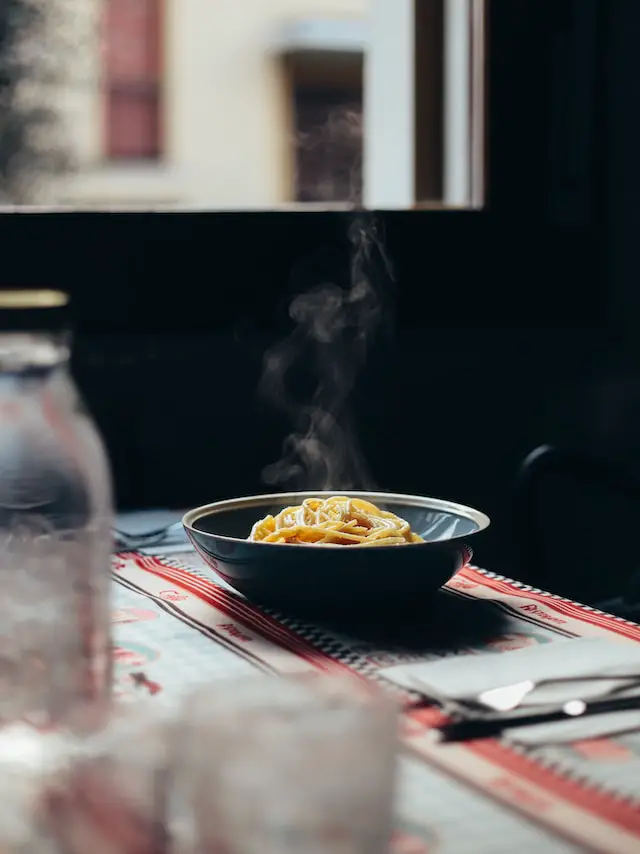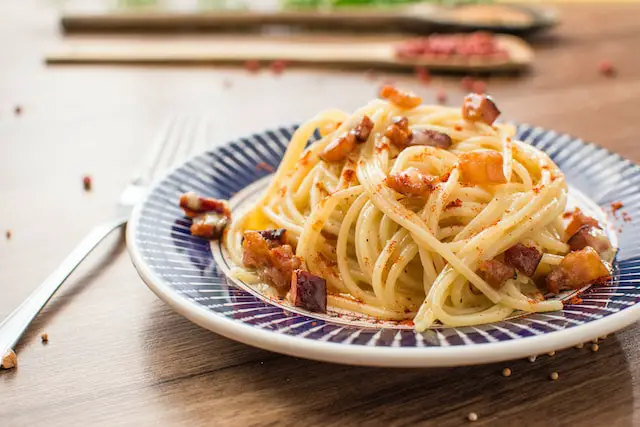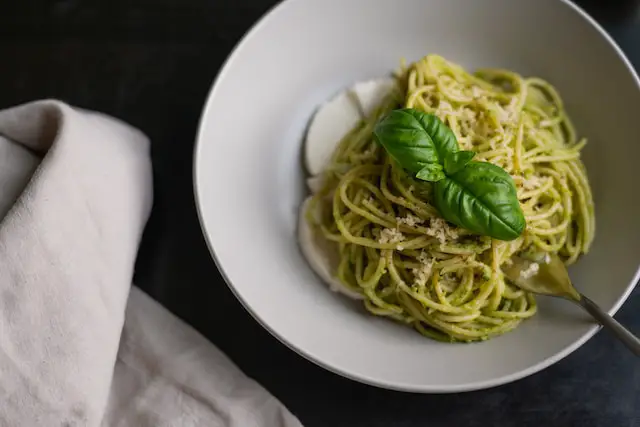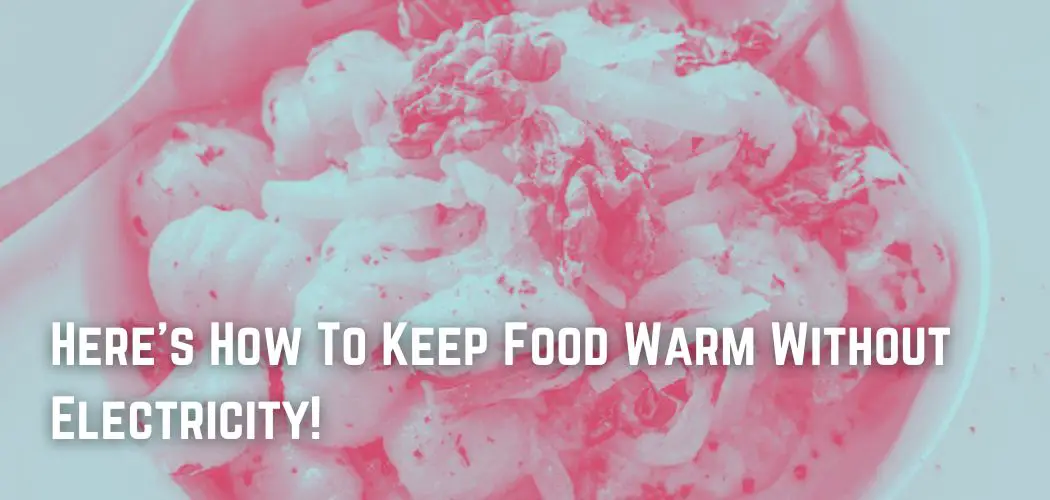Keeping food warm without electricity can be a challenge, especially during outdoor events or in areas where there is no electricity. However, there are several ways to keep your food warm without relying on electricity.
Contents
Use Insulated Food Containers
One of the easiest ways to keep food warm without electricity is by using insulated food containers. These containers are designed to keep food warm for several hours, even without any additional heating sources.
You can use them to store your cooked food and keep it warm until you are ready to serve. Insulated food containers are available in different sizes and shapes, so you can choose one that fits your needs.
Wrap Food In Foil
Wrapping food in foil is another effective way to keep it warm. Aluminum foil is an excellent heat conductor and can retain heat well.
Simply wrap your food in foil and cover it with a towel or blanket to prevent heat loss. This method is especially useful for foods that are cooked in the oven, such as roasted meat, casseroles, and baked goods.
Use A Chafing Dish
A chafing dish is a popular catering equipment that uses fuel to keep food warm. It consists of a metal frame, a water pan, and a food pan.
The water pan is filled with hot water, and the food pan is placed on top of it. The heat from the water keeps the food warm. Chafing dishes are available in different sizes and shapes, so you can choose one that fits your needs.
Use Hot Stones
Hot stones are another effective way to keep food warm. Simply heat some stones in an oven or over a fire, and then place them in a container with your food.

The stones will retain heat and keep your food warm for several hours. Be sure to wrap the stones in foil or cloth to prevent them from touching the food.
Use A Cooler
A cooler can also be used to keep food warm. Simply heat some bricks or stones in an oven or over a fire, and then place them in the bottom of a cooler. Place your cooked food in a covered container on top of the bricks or stones.
Cover the cooler with a blanket or towel to prevent heat loss. The bricks or stones will retain heat and keep your food warm for several hours.
Use A Towel
While towels may be helpful in insulating food to some extent, they are not the most effective way to keep food warm for a long time.
Towels are often made of cotton or other absorbent materials, which means they may actually absorb the heat and moisture from the food, making it cooler and drier over time.
In addition, towels may also harbor bacteria and other germs, which could contaminate the food and make it unsafe to eat. Therefore, it’s important to use clean towels and replace them frequently if you plan on using them to help keep your food warm.
Overall, while towels may provide some level of insulation and help to maintain the temperature of your food, they are not a reliable or efficient method for keeping food warm for an extended period of time.
Thermal Cooker
A thermal cooker is a type of cooking appliance that uses the heat retained in the food after it has been brought to a boil to continue cooking it.
It consists of two main components: an inner pot and an outer pot. The inner pot is used to cook the food, while the outer pot is designed to insulate and retain heat.

To use a thermal cooker, you first bring the food to a boil on a stove or other heat source. Once the food has reached a boil, you transfer it to the inner pot of the thermal cooker and seal the lid.
The heat of the food is then trapped inside the inner pot, which is placed inside the outer pot. The insulation provided by the outer pot helps to retain the heat, keeping the food warm for several hours.
Thermal cookers are particularly useful for people who want to keep food warm for an extended period of time without the use of electricity, such as during a power outage or when camping.
They are also an excellent option for people who want to save energy and reduce their electricity bills.
One advantage of using a thermal cooker is that it can help to preserve the nutrients and flavors of the food. Because the food is cooked in its own heat and is not exposed to additional heat sources, it retains more of its natural vitamins and minerals.
Trap The Steam
Trapping the steam is an effective way to keep food warm. This method is commonly used in cooking rice and other grains.
When the food is cooked, the steam generated by the heat is trapped inside the pot by placing a lid on top. This keeps the food warm until it is ready to be served.
In addition, you can also use steam tables to keep food warm. These are commonly used in restaurants and catering services. The steam tables are essentially heated trays that use steam to keep the food warm.
The steam is generated by a heating element located beneath the tray. The food is placed in pans or containers and placed on the steam table, where it is kept warm until it is ready to be served.
Overall, trapping steam is an effective and simple way to keep food warm, whether you are cooking at home or serving food at an event.
Thermal Bags
They are typically made with insulating materials such as foam or neoprene and can help retain the heat of the food inside. Thermal bags are commonly used to transport food from one location to another, such as from a restaurant to a customer’s home.
They are also used for picnics, outdoor events, and camping trips, where electricity may not be available to keep food warm.
Thermal bags come in different sizes and shapes to accommodate different types of food containers. Some thermal bags are designed specifically for pizza boxes, while others are designed for larger containers such as casserole dishes.
The insulation in the bag works by trapping the heat inside, which keeps the food warm for a longer period of time.
It is important to note that thermal bags are not designed to keep food hot indefinitely. The length of time that the food stays warm in a thermal bag will depend on various factors, such as the type of food, the container it is in, and the ambient temperature.
However, they can keep food warm for a few hours, which is often sufficient for transporting food or keeping it warm during short-term events.
Gas Stove
A gas stove can help in keeping food warm, but it is not a reliable or safe method for long-term food warming. If you are trying to keep food warm for a short period of time, you can use the “warming” or “low” setting on the stove.
However, this method can be risky if you forget to turn off the stove or if the temperature is too high, as it can overcook or even burn the food.

If you need to keep food warm for a longer period of time, it is better to use other methods like a thermal cooker or insulated container.
These methods are specifically designed to keep food warm without the need for a constant heat source, and they are much safer and more efficient than leaving food on a gas stove.
There are several ways to keep food warm without electricity. Insulated food containers, wrapping food in foil, using a chafing dish, using hot stones, and using a cooler are some effective ways to keep your food warm.
These methods are simple, affordable, and require no electricity, making them perfect for outdoor events, camping trips, and emergencies.
Health Benefits Of Eating Warm Food
There are several health benefits of eating warm food:
- Enhances Digestion: Warm food is easier for the body to digest as it helps to break down the food more efficiently, which makes it easier for the body to extract nutrients. It also helps in better absorption of nutrients.
- Boosts Metabolism: Eating warm food can boost your metabolism, which can help you burn more calories. This is because the body has to work harder to warm up the food, which increases the metabolic rate.
- Reduces the Risk of Infections: Eating warm food can also help reduce the risk of infections as warm food helps kill bacteria and other harmful microorganisms that may be present in the food.
- Relieves Stress: Eating warm food can help to relieve stress and promote relaxation. This is because warm food has a soothing effect on the body and helps to calm the nerves.
- Promotes Better Sleep: Eating warm food before bed can promote better sleep as it helps to relax the body and improve digestion, which can lead to a more restful night’s sleep.
Eating warm food has several health benefits, including enhanced digestion, boosted metabolism, reduced risk of infections, stress relief, and better sleep.
Conclusion
There are many ways to keep food warm without electricity, making it possible to enjoy hot meals even in situations where there is no power.
From using insulated containers, such as thermal cookers, to wrapping food in towels or placing it in thermal bags, there are many options available to suit different needs and preferences.
Some methods, such as using gas stoves or trapping steam, require a source of heat, but can still be useful in keeping food warm for a short period of time.
It is important to note that while these methods can help maintain the temperature of the food, they may not be suitable for long-term food storage or reheating.
Overall, by using one or a combination of these methods, it is possible to keep food warm and maintain its flavor and nutritional value, making mealtime a more enjoyable experience.
